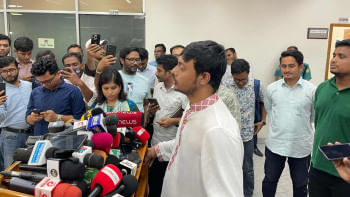Scoping a better strategy for Rohingya litigation

On 4 October 2018, a Bench comprising Chief Justice of India, Ranjan Gogoi, and Justices S.K. Kaul and K.M. Joseph dismissed an application to restrain the government from taking steps to deport to Myanmar seven Rohingya refugees jailed in Assam. The bench refused to intervene in a plea made by Mohammed Salimullah, speaking through advocate Prashant Bhushan, that a United Nations officer must be allowed to first talk to these seven Rohingya. The UN Secretary General António Guterres was in town that day. And Justice Gogoi is the first ever Chief Justice from Assam.
Regardless, the Supreme Court’s approval of India’s deportation of the seven Rohingyas presents, both, despair as well as hope. The deportation brings despair to some 40,000 Rohingyas now lodged in India in states other than Assam. There is hope in that the October 4, 2018 ruling is not binding on Rohingya stationed in states other than Assam. Arguably, the deportation from Assam is a special case in light of the Indian Constitution, the Assam Accord and the Indian Citizenship Act Article 6(A). Many Rohingya are settled in Jammu.
Assam as a Special Case
Assam is a special case under Indian laws. In the Assam Mahasangha case, Justice Nariman noted the history of Assam’s annexation during the British rule. First, the Burmese "ceded Assam to the British on 24th February, 1826 as per the treaty of Yandabo”. Subsequently, “the British annexed Assam and placed it as an administrative unit of the Bengal Province.”
The Government of India Act, 1935, made Assam under section 46(1) “a Governor's province”. The Foreigners Act of 1946 put the burden of proving whether a person is or is not a foreigner upon such persons. Four years later, the Constitution of India, 1950, Article 5 stated “every person who has his domicile in the territory of India and who was either born in the territory of India; or either of whose parents were born in the territory of India; or who has been ordinarily resident in the territory of India for not less than 5 years immediately preceding” the adoption of the constitution “shall be a citizen of India”.
Specifically, the Immigrants (Expulsion from Assam) Act, 1950, sought to protect the “indigenous inhabitants of Assam”. The statement of objects and reasons of this Act noted “a serious situation” arising from the immigration of a very large number of “East Bengal residents into Assam.” Given, such large migration impacted “the economy of the province, besides giving rise to a serious law and order problem, the Expulsion from Assam Act conferred “necessary powers on the Central Government to deal with the situation.”
Only the next year, during the census of 1951, a National Register of Citizens (NRC) was prepared under a directive of the Ministry of Home Affairs. The NRC sought to contain information village-wise. The Bangladesh War of independence of 1971 pushed more people into Assam. New Delhi and Dhaka signed on 19th March, 1972, a treaty for friendship, co-operation and peace. Article 8 of the Indo-Bangla Treaty put a clear premium on a “security” narrative.
The influx of illegal persons continued unabated nevertheless. The All Assam Students Union first submitted a memorandum to Indira Gandhi inviting her urgent attention. In response, the Indian Parliament enacted the Illegal Migrants (Determination by Tribunal) Act, 1983. This Act, applicable only to Assam, sought a speedy determination of illegal migrants with a view to their deportation.
The subsequent Assam Accord between the Assam Government, the Central Government and various Assamese political parties under “Foreigners Issue” stressed upon the speedier detection of the illegals. The Accord set, “for purpose of detection and deletion of foreigners”, 1 January 1966 as “the base date and year”. All persons who came to Assam prior to this date “including those amongst them whose names appeared on the electoral rolls used in 1967 elections” were to be “regularized”. But foreigners who came after and on that date upto 24th March, 1971 were to be detected in accordance with the provisions of the Foreigners Act, 1946 and the Foreigners (Tribunals) Order, 1939.
The Assam Accord mandated that the names of foreigners so detected “be deleted from the electoral rolls in force.” Such persons were required to register themselves before the Registration Officers of the respective districts in accordance with the provisions of the Registration of Foreigners Act, 1939 and the Registration of Foreigners Rules, 1939. The Assam Accord led to Section 6A being put into the Indian Citizenship Act in 1985. The Assam Accord allowed for a large number of illegal migrants to become deemed citizens of India.
In the Sarbananda Sonowal case, the Supreme Court in 2005, while striking down the Illegal Migrants (Determination by Tribunal) Act 1983, noted that this Act “operated in the reverse direction”. Instead of supervising the deportation of illegal migrants, the Act placed the burden of proof on the Assam Government. This Supreme Court found this reversal violating Articles 14 and 355 the Indian Constitution in so far as the Central Government had “failed to protect the State of Assam against the external aggression and internal disturbance caused by the huge influx of illegal migrants from Bangladesh to Assam”.
This left the Immigrants (Expulsion from Assam) Act 1950 together with the Foreigners Act and the Foreigners Tribunal Order, 1964, as laws in the hands of Indian Government for the detection of illegal migrants for deportation. A year later, Justice SB Sinha in Sonowal II case lamented that “there is a lack of will in the matter of ensuring that illegal immigrants are sent out of the country.” The deportation of Rohingya in Assam is a step in that direction; central government has sent 7 Rohingyas back under an understanding with Myanmar.
In Mahasangha the Supreme Court had in 2014 directed the “updating of the NRC in Assam so that the entire updated NRC is published by the end of January, 2016.” The task of NRC updating is more complicated that the Supreme Court might think. Subsequent litigation in Gauhati Hight Court and the Supreme Court has proved this.
Is a better litigation Strategy Possible?
India has not ratified the Refugee Convention, 1951, and the Optional Protocol of 1967. And India has no law on refugees. India grants refugee status through executive orders passed by the Central Government.
Therefore, advocate for the Rohingya, Prashant Bhusan, invoked India’s violation of customary international law of non refoulement in deporting Rohingya. Article 38(1)(b) of the International Court of Justice (the ICJ) Statute, 1945, defines customary law as “international custom, as evidence of a general practice accepted as law”.
The Rohingya litigation before the Supreme Court has not been flawless. Bhushan has stressed far too much on non-refoulment only to see the Supreme Court reject this. However, various High Courts have held non refoulement as a jus cogens rule from which no state can derogate.
Notably, Article 51(c) of the Indian Constitution calls upon India to “foster respect for international law and treaty obligations in the dealings of organized peoples with one another”. Might Article 38(1) (c) of the ICJ statute offer a better litigation strategy? This ICJ Statute Article points to another main source of international law, “the general principles of law recognized by civilized nations”.
Lawyers before the Court could argue that when noting “international law” and “treaty obligations” separately, the Indian Constitution points to international law’s non-treaty sources, such as “general principles of law” that India should follow. And India would not want to be called an “uncivilized nation” under international law. After all, a constitutional responsibility of the court to protect lives even of aliens is part of the “general principles of law recognized by civilized nations” from which no civilized state should derogate.
The writer is Associate Professor at Jindal Global Law School, India.

 For all latest news, follow The Daily Star's Google News channel.
For all latest news, follow The Daily Star's Google News channel. 



Comments